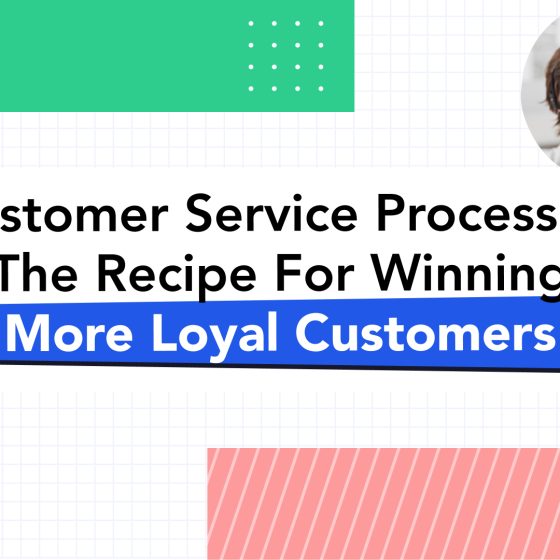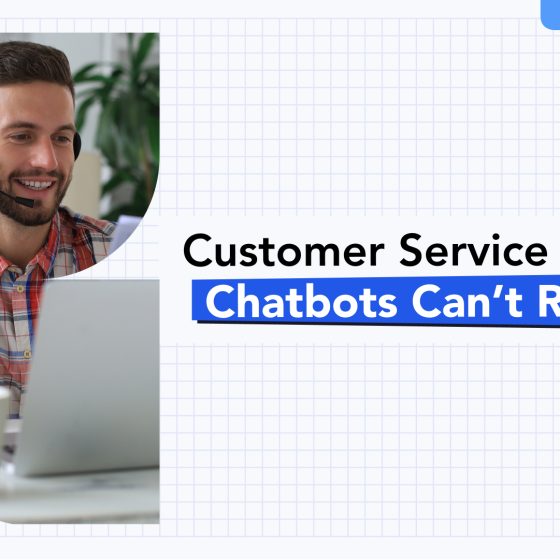Did you know 62% of consumers prefer a customer service bot rather than waiting for human agents to answer their requests?
That’s right, the future of customer service is here, and it’s being driven by artificial intelligence.
As businesses strive to stay ahead of the curve and provide top-notch service to their customers, it’s crucial to choose the right AI-powered customer service tool for your needs. But with so many options out there, how do you know where to begin?
We’ve got you covered! Whether you’re a small business owner or a customer service manager at a large corporation, this guide will walk you through the factors to consider when selecting an AI tool and provide practical tips for implementation and onboarding.
So sit back, grab a cup of coffee, and dive into the exciting world of AI-driven customer service!
Understanding your business’s customer service needs
AI tools can fit your business’s customer service needs in various forms. Just like you wouldn’t wear flip-flops to a job interview, you wouldn’t choose a chatbot tool for complex customer inquiries. So, take the time to understand your business’s customer service needs and choose the AI-powered customer service tool that fits just right.
First things first, let’s get to know your customers.
- Who are they?
- What do they want?
- What are their pain points?
By understanding your target audience, you can ensure that you deliver the customer service they crave.
Next up, take a good hard look at your current customer service performance. Think of it like a before-and-after shot but without plastic surgery.
- What are you doing well?
- Where are the areas that need a little nip and tuck?
Identifying your weaknesses and pain points is key to finding the right AI-powered tools to help you up your customer service game.
And let’s not forget the end goal:
- What are you hoping to achieve by implementing AI in your customer service strategy?
- Is it faster response times?
- Is it reduced costs?
- Is it to increase customer satisfaction?
Whatever it is, make sure you define your objectives clearly so you can pick the right tools to help you get there.
Overview of AI-powered customer service tools
With so many different types of tools available in the market, choosing the right one can feel like a daunting task. Don’t worry; we’ve got your back! Let’s take a closer look at the different types of AI-powered customer service tools out there and see which one suits your business best.
A. Chatbots
First up, we have chatbots.
Chatbots can handle simple and routine customer inquiries, like “What are your store hours?” or “Do you have this product in stock?” This frees your customer service team to focus on more complex issues, like resolving customer complaints or providing in-depth product support.
Plus, chatbots never need to sleep, which means they can provide support to customers 24/7 – no caffeine required.
B. Virtual Assistants
These AI-powered tools are like Alfred to your Bruce Wayne, always ready to lend a hand when you need it. Virtual assistants can handle various tasks, from scheduling appointments to providing personalized recommendations to customers.
The virtual assistant can use machine learning algorithms to analyze the customer’s preferences and past purchases to provide personalized recommendations. It can also answer basic questions about sizing, materials, and shipping options.
They can even learn from past interactions to provide even more tailored service. Just like Alfred helps Bruce manage his busy schedule, virtual assistants can help you easily manage your customer interactions.
C. Automated Query Management System
Query management systems can automate the ticketing process, from ticket creation to resolution, which means you can manage customer issues and requests more efficiently. They can also track customer feedback and measure customer satisfaction, so you can see how your business is performing in real time.
These systems use natural language processing and machine learning algorithms to understand and respond to customer queries in a conversational manner, providing a more personalized and efficient customer service experience.
D. AI-powered analytics tools
These tools are like the Iron Man of customer service, using cutting-edge technology to analyze customer data and provide valuable insights. AI-powered analytics tools can help you optimize customer interactions and improve customer satisfaction.
AI-powered analytics tools come in different tools like predictive, sentiment, chatbot, and voice analytics. AI-powered analytics tools can predict customer behavior and recommend personalized offers, just like Iron Man’s Jarvis analyzes data to help Tony Stark save the world.
Each type of AI-powered customer service tool has unique strengths and use cases. By understanding these tools and how they can benefit your business, you’ll be well on your way to becoming a customer service superhero!
Features to consider when choosing AI-powered customer service tools
Are you ready to choose the perfect AI-powered customer service tool for your business? Great, but hold your horses! Before you start, it’s important to understand the key features to consider for a successful implementation. Here are some essential features to keep in mind:
- Ease of integration with existing systems: You don’t want your AI tool to operate in a silo. It should be seamlessly integrated with your existing systems to ensure smooth functioning. After all, you don’t want your AI tool to be like that odd cousin who never gets along with anyone at family gatherings.
- Customizability and scalability: One size doesn’t fit all when it comes to customer service. Your AI tool should be customizable to meet your specific needs and scalable to grow your business. You don’t want a tool as rigid as a rock and can’t adapt to your changing business requirements.
- Language support and localization capabilities: In a global market, catering to customers in their native language is critical. Your AI tool should support multiple languages and have localization capabilities to deliver a personalized experience.
- Reporting and analytics features: Data is the king, and reporting and analytics features are the crown jewels of your AI tool. It should provide you with in-depth insights into customer behavior, satisfaction levels, and agent performance.
- Security and data privacy: The last thing you want is for your customer data to fall into the wrong hands. Your AI tool should have robust security features and comply with data privacy regulations to protect your customer’s sensitive information. You don’t want a tool that’s as secure as a house with an open door.
By considering these features, you’ll be on the right track to selecting the perfect AI-powered customer service tool for your business. So, make sure your AI tool is the life of the party and not the wallflower.
Evaluating potential vendors and solutions
Evaluating potential vendors and solutions for AI-powered customer service tools is like going on a first date. You want to make sure that you’re compatible, that you have similar interests, and that they’re not secretly a robot from the future trying to take over the world.
Okay, maybe that last part is a bit of an exaggeration, but you get the point. Choosing the right vendor and solution is crucial for the success of your customer service efforts.
Here are some key factors to keep in mind:
- Reputation and credibility of the vendor: Do they have a proven track record of delivering quality solutions? Are they well-respected in the industry?
- Customer reviews and testimonials: What are other customers saying about their experience with the vendor and solution? Do they have positive feedback, or are there red flags to be aware of?
- Availability of support and training resources: Will the vendor provide the resources you need to get up and running with the solution? Do they offer ongoing support to help you maximize your investment?
- Pricing models: What is the pricing structure for the solution? Are there hidden fees or costs to be aware of?
- Total cost of ownership: Beyond the initial purchase price, what are the ongoing costs associated with the solution? Will it be a worthwhile investment in the long run?
When it comes to conducting thorough research and comparisons to choose a potential vendor for AI-powered customer service tools, here are some tips to consider:
- Define your needs: Before you start researching vendors, define your specific needs and requirements. This will help you narrow down your search and focus on solutions that meet your unique business needs.
- Research multiple vendors: Don’t settle for the first vendor you come across. Research multiple vendors and compare their solutions, features, and pricing.
- Request demos and trials: To get a hands-on experience with the software, request demos and trials of the vendor’s solution.
Choosing the one software out of the lot would be difficult, sometimes even chaotic, but you can be the best software provider for yourself with patience. Remember to take your time and weigh all the factors before deciding.
Implementation and onboarding
What happens when you throw someone at the deep end of a pool without teaching them how to swim? They may be able to keep themselves afloat for a little while, but eventually, they’ll start to struggle and may even sink.
Similarly, if employees aren’t properly trained on using the AI tool and customers aren’t prepared for its introduction, businesses may find themselves in deep water.
The first step is to start with a rollout plan for your brand-new tool. Set clear goals and objectives for the tool, and identify key performance indicators (KPIs) to measure its success. Then, develop a timeline for implementation and onboarding, and assign responsibilities to team members.
Also, provide your staff with the training and resources needed to use the AI tool effectively. This will help them to address customer inquiries and improve response times confidently.
You can’t manage what you can’t measure, so establish processes for monitoring the tool’s performance and gathering feedback from customers and employees. This will help you identify areas for improvement and make data-driven decisions to optimize the tool’s performance.
Lastly, remember to set realistic expectations for your staff and customers. Be transparent about the capabilities of the AI tool and what it can and cannot do. This will help to manage expectations and avoid disappointment.
Measuring success and iterating
Oh boy, it’s time to discuss measuring success with KPIs and continuous improvement. Don’t worry; it’s not as dull as it sounds!
When you implement an AI-powered customer service tool, setting some goals for what you want to achieve is important. That’s where KPIs come in – they’re like the GPS for your AI tool, helping you stay on track and reach your destination.
But KPIs aren’t a set-it-and-forget-it kind of thing. You need to keep an eye on them and make adjustments as needed, like a gardener tending to their plants. With the right care and attention, your AI tool can flourish and grow.
And speaking of growth, it’s important to foster a culture of continuous improvement and innovation within your organization. That means encouraging your team to experiment, take risks, and try new things.
So don’t be afraid to get creative and push the boundaries with your AI tool. Just ensure you’re keeping an eye on those KPIs and adjusting as needed.
If all goes well, your AI tool may become the secret ingredient that takes your customer service to the next level!
To sum it all up
In conclusion, choosing the right AI-powered customer service tool is crucial for businesses of all sizes. Make sure you choose the right tools and then the right vendor to achieve the best ROIs.
As you begin your search for the perfect AI-powered customer service tool, keep in mind the factors discussed in this guide, such as the reputation and credibility of the vendor, customer reviews and testimonials, availability of support and training resources, pricing models, total cost of ownership, and developing a rollout plan.
The right AI tool can enhance customer experiences, increase operational efficiency, and drive business growth. Want to start your customer service AI journey right now? Get the AI functionalities of multiple tools in one solution—Helpwise.










